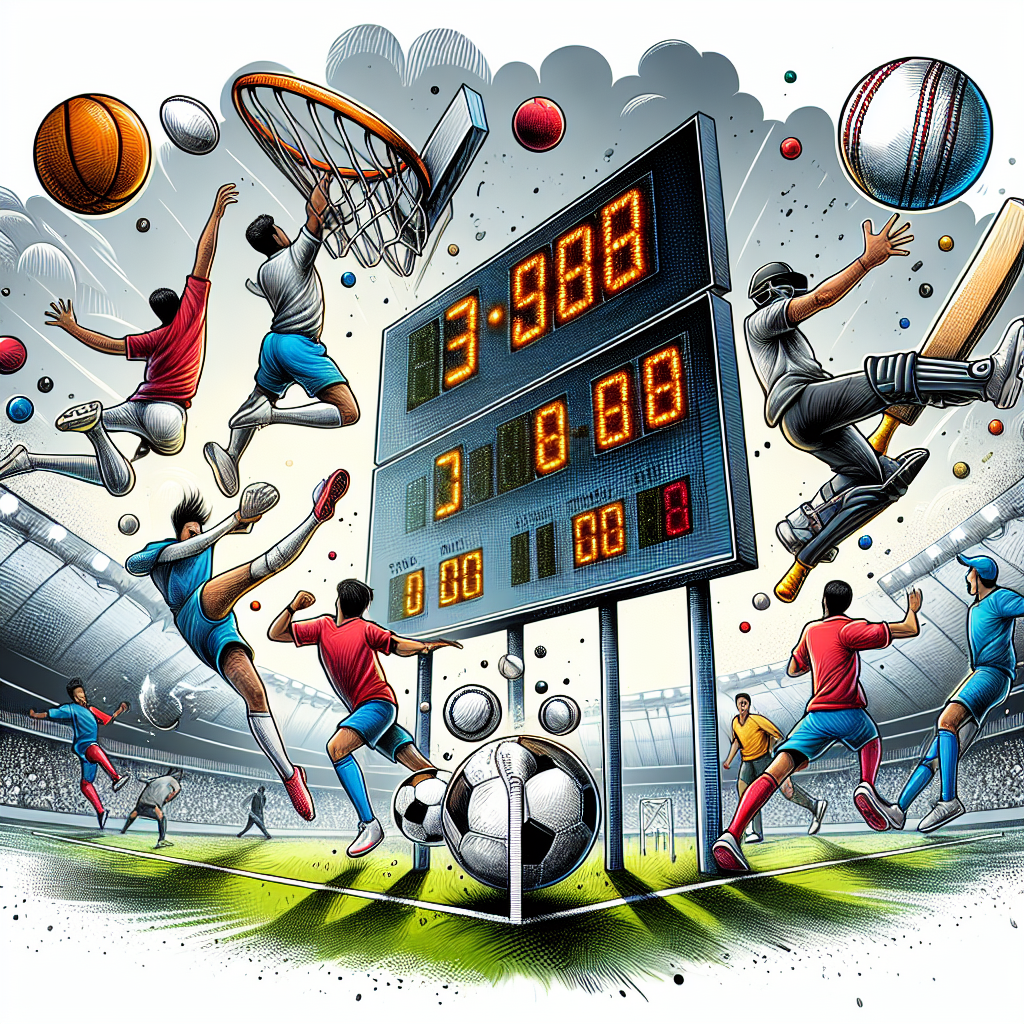Introduction
In the world of sports, nothing generates excitement quite like Game Day. As fans flock to stadiums or gather in their living rooms, the anticipation of live scores and highlights creates an electrifying atmosphere. In 2025, advancements in technology and media have revolutionized how we experience these exhilarating moments. From real-time updates to immersive highlights, fans now have unprecedented access to all the action as it unfolds. By exploring the latest trends in live scores and highlights, this article will enhance your Game Day experience, keeping you informed and engaged like never before.
The Evolution of Game Day: A Look at Live Scores and Highlights
The concept of Game Day has significantly transformed over the years. In previous decades, fans relied on radio broadcasts and print media to stay updated on scores and game highlights. However, with the advent of the internet, these methods quickly became obsolete. By 2025, live scores are not just available on dedicated sports websites; they are integrated into mobile applications, social media platforms, and even wearable devices. For example, apps like ESPN and Bleacher Report now provide push notifications, allowing fans to receive instant updates about their favorite teams and players.
Moreover, the highlights that once took hours to gather are now available mere moments after they’ve occurred. Broadcasting companies and sports networks use advanced technology, such as AI and machine learning, to curate and disseminate video content swiftly. Fans can view significant moments during halftime, and in some cases, within seconds after they happen. This real-time access to highlights fosters a deeper connection to the game, as fans can relive exciting plays without delay, enhancing the overall Game Day experience.
How Technology Has Changed the Game: Real-Time Updates
As we venture further into 2025, the technological landscape continues to evolve, providing fans with unparalleled access to real-time updates. One significant advancement is the rise of augmented and virtual reality applications that use geolocation to give users personalized updates based on their physical location. For instance, as fans enter the stadium, they can receive notifications about player statistics, injury reports, or even check into local bars showing the game, all through a single application.
Additionally, live streaming has reached new heights, allowing fans to watch games from multiple angles and platforms. Major sports leagues have embraced these technologies, partnering with tech companies to enhance the experience. For example, the NFL’s partnership with major streaming platforms allows fans to watch games live, while simultaneously receiving real-time data on player performance through interactive graphics. This synergy between technology and sports ensures that Game Day enthusiasts are always connected, no matter where they are.
The Role of Social Media in Game Day Experience
In 2025, social media plays an increasingly pivotal role in the Game Day experience. Platforms like Twitter, Facebook, and Instagram facilitate real-time discussions and instant updates about matches, highlights, and player performances. Fans are now part of a global conversation, sharing their reactions, memes, and commentary almost simultaneously with the unfolding action on the field. This social aspect not only enhances engagement but also serves as a second screen for many viewers.
Furthermore, many sports teams and leagues have adapted their marketing strategies to focus on social media engagement. Live Q&A sessions, behind-the-scenes content, and interactive polls during games keep fans involved even when they are not physically present at the event. For example, during the Super Bowl 2025, social media platforms featured interactive maps that allowed fans to track the game in real time while accessing exclusive highlights curated by influencers and athletes themselves. By leveraging these platforms, sports organizations can reach a broader audience and create a more invested fan base.
Enhancing Viewer Interaction: Game Day Apps and Features
The rise of Game Day apps has significantly enhanced viewer interaction, providing fans with a comprehensive toolkit for engaging with their favorite sports. Many apps now offer customizable notifications, allowing users to tailor the information they receive based on specific teams, players, or games. This enhanced customization means that fans can monitor livescores, player stats, and breaking news relevant to their interests without sifting through extraneous information.
In addition to traditional updates, many apps come equipped with interactive features such as live polls, quizzes, and discussions. These features give fans a platform to voice their opinions on plays, strategies, and referee decisions during the game itself, transforming the Game Day experience into a participatory event. Furthermore, advanced analytics integrated into these apps offer deeper insights into games; fans can view real-time statistics, and advanced metrics, and even predict outcomes based on live data analysis.
The Future of Game Day: Predictions and Innovations
As we look ahead, several exciting innovations on the horizon promise to revolutionize the Game Day experience further. One of the most anticipated developments is the integration of advanced AI-powered virtual commentators. These AI systems will provide real-time analysis, context, and even emotional insights, further immersing fans in the game. As technology evolves, we can expect improved voice recognition and natural language processing, allowing users to ask AI commentators questions about the game or receive personalized analysis tailored to their preferences.
Additionally, the potential for 5G technology to enhance our connectivity will likely change how we consume sports events. With faster internet speeds, the possibility of live streaming from multiple perspectives, such as in-game player cameras or drone views from above the field, may soon become a reality. As accessibility improves, more fans can engage with the content they want to see, transforming the traditional viewing experience.
Conclusion
In conclusion, Game Day has evolved dramatically over the years, driven by advancements in technology and a profound understanding of fan engagement. The way we access live scores and highlights has transitioned from simple radio broadcasts to comprehensive mobile applications that deliver real-time updates, interactive features, and participatory experiences. As social media continues to shape the dialogue around sports, fans become integral parts of the action. The future of Game Day looks bright, with innovations on the horizon poised to offer even more exciting possibilities for sports enthusiasts across the globe.
FAQs
What are live scores, and why are they important on Game Day?
Live scores provide real-time updates about ongoing games, keeping fans informed and engaged. They are crucial because they allow fans to follow the action as it happens, even if they’re not watching the game live.
Are there any apps specifically for following Game Day scores and highlights?
Yes, several apps, such as ESPN, Bleacher Report, and the official league apps, offer live scores and highlights, along with other features like notifications, detailed statistics, and interactive content.
How has social media changed sports viewing experiences during Game Day?
Social media platforms facilitate real-time discussions, instant updates, and shared experiences among fans, enhancing engagement and enabling a broader conversation around the game while it unfolds.
What future innovations can we expect for Game Day experiences?
Future innovations may include AI-powered virtual commentators, advanced analytics integration, and improved connectivity through 5G technology, allowing for a more immersive and interactive viewing experience.
Can I access Game Day highlights if I miss a game?
Yes, most sports networks and apps provide highlights after games, often within minutes of key plays, so you can catch up on the action you missed.






